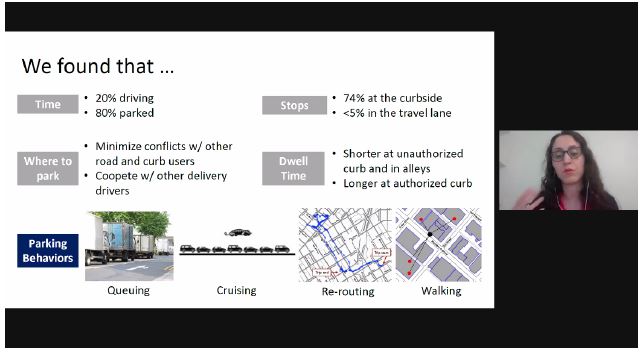
MARCH 1, 2021 — From curb management to micro-mobility oparking and management to contactless and beyond, every trend and model sparked or encouraged by the COVID-19 pandemic got a thorough discussion during IPMI’s Mobility & Innovation Summit last month, and the conversations continued well beyond the sessions where they started.
More than 530 industry professionals from all sectors spent two half-days in sessions and networking lounges with top experts—including those who’ve put new practices to work in the real world—and both the educational content and the chat boxes flew. Questions were frequent and detailed—and the answers were as well, including what happened when new things were tried, how challenges were overcome, and what pitfalls have emerged (with solutions) as people changed the way they worked, recreated, and lived their lives during the pandemic.
The Curb of the Future
Another panel featured Robert Ferrin, the City of Columbus, Ohio; Brandy Stanley, CAPP, the City of Las Vegas; Jascha Franklin-Hodge, Open Mobility Foundation; and Andisheh Ranjbari, PhD, University of Washington Urban Freight Lab, talking about the curb of the future, including what they’ve learned and enacted that’s worked and what the data tells them about the future.
Ferrin kicked off with a short introduction of the curb management program in Columbus. “We know our curbs can no longer be static—they have to be dynamic,” he said, before handing things off to Stanley, who explained the extensive system piloted in Las Vegas recently, including unforeseen challenges and how they were resolved.
Curb management, she said, is a “huge beast,” with so many competing demands for limited space. Las Vegas concentrated first on identifying its biggest pain points, one of which is simply moving people around the city. She worked to launch a pilot program in old downtown Las Vegas—Fremont Street—where hotels are older and don’t have off-street motor lobbies; everyone uses the street to load and unload passengers and goods. The introduction of TNCs, she said, created more congestion, especially around casinos, and begin an uptick in unsafe behavior by both drivers and riders.
“We put together a task force,” she said, which them “chose one half of one block of one city street, and one side of that street, so it’s six spaces.” That was transformed into a designated immediate loading/unloading zone. “You can only be there if you’re dropping off or picking up passengers.”
The first challenge happened almost immediately: “We realized we had to staff that area almost 24/7,” Stanley said, at a payroll cost of $25,000 per month. But once that shook out, the zone was “a huge success,” and proved able to move huge numbers of people through the area without increasing congestion or encouraging dangerous maneuvers.
The city began investigating technology to help keep things moving. “When one or more of the staff weren’t there, the zone failed almost immediately,” Stanley said. “Literally, the curb filled up with cars that just stayed there.”
She issued an RFP and installed camera-based kiosks that tell drivers when they have to move on, where available spaces are, and can collect data beyond parking, including how many people walk by them. She will also use a parking garage for TNC driver staging. Drivers download an app that gives them access to free parking and amenities that include porta-potties, food truck options, and free WiFi. “It helps get them off the street,” Stanley explained. That will launch when businesses start re-opening in ernest later this year. Lots of questions were answered during Stanley’s presentation and there was a lot of interest in the curb-management kiosks.
Ranjbari then took the screen to talk about her research into curb behavior, including ride-alongs with delivery drivers to understand their parking behavior; research team members wore GPS devices and shadowed drivers from UPS, Amazon, and other carriers.
“It informed a lot of future research,” she said. Thanks to that and a grant, she’s working now on developing an app that shows real-time curb parking occupancies and predicted occupancies to let drivers plan and find parking spaces earlier at their destinations. The system is sensor-based and currently being piloted in two areas: one with in-ground sensors, and one with above-ground cameras. Soon, she hopes to recruit drivers to test the system and see if the predictive information works as intended.
Finally, Franklin-Hodge talked about the digital infrastructure that needs to be paired with physical infrastructure in cities to help manage the curb. “We have a fundamental responsibility to manage public space for the public good,” he said. Developing digital infrastructure to merge with the existing physical infrastructure will do that.